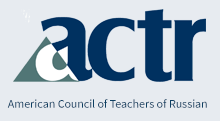Russian Language Journal
Keywords
education, organization, assignments, enrollment, membership
Abstract
The National Language Service Corps (NLSC) was established in 2006 as a pilot program under the auspices of the National Security Education Program (NSEP). This new organization was tasked with providing and maintaining a standing civilian corps of certified bilinguals who would be available for service to federal government agencies as they are needed, and to state and local government agencies in time of emergency. The intent of the NLSC is to fill the gap between full-‐‑time language services professionals and individuals who wish to volunteer for temporary services for short-‐‑ or medium-‐‑term assignments. The NLSC recruits a readily-‐‑available pool of individuals who have expertise in languages that are important to the security and welfare of the nation. The NLSC must qualify applicants as part of its enrollment process. The NLSC uses the Federal Interagency Language Roundtable Language Proficiency Skill Level Descriptions (the ILR scale) in speaking, reading, and listening as a basis for determining eligibility for Charter membership. The NLSC requires candidates to have proficiency in English and the foreign language at ILR level 3 in the domains of speaking, reading, and listening. All NLSC applicants are asked to complete a series of language self-‐‑assessment questions in the four communicative skills and English as an initial screen of language proficiency. These self-‐‑assessments provide an indication of applicants’ levels on the ILR scale, and minimize the overall formal testing requirements by eliminating the need to test individuals who self-‐‑assess at levels lower than those required by the NLSC. Formal assessment of English language skills is waived for applicants who attended an accredited high school or college in the U.S. for at least three years and graduated.
Recommended Citation
Stansfield, Charles W.; Gao, Jing; and Rivers, William P.
(2010)
"A Concurrent Validity Study of Self-‐‑Assessments and the Federal Interagency Language Roundtable Oral Proficiency Interview,"
Russian Language Journal: Vol. 60:
Iss.
1, Article 18.
Available at:
https://scholarsarchive.byu.edu/rlj/vol60/iss1/18

